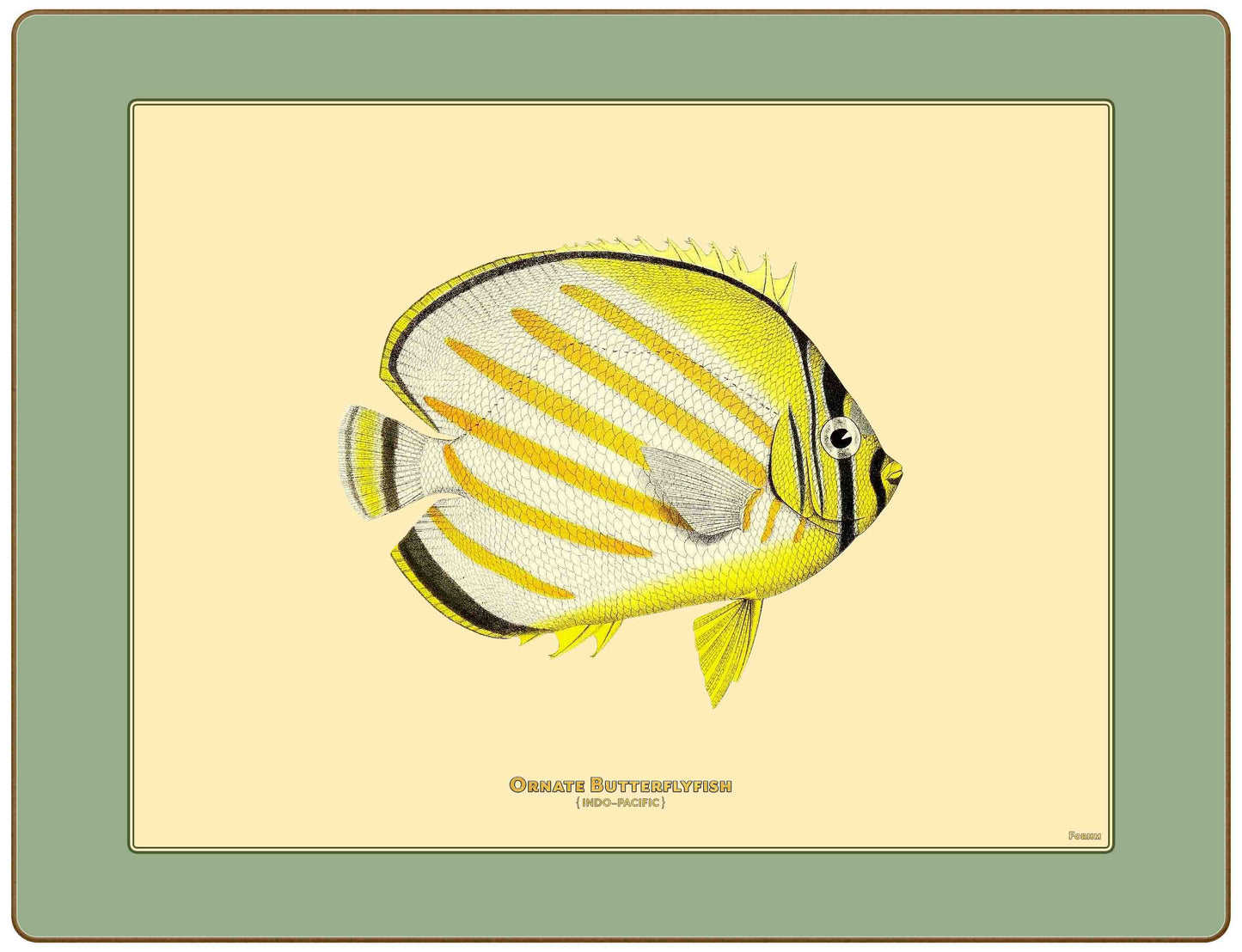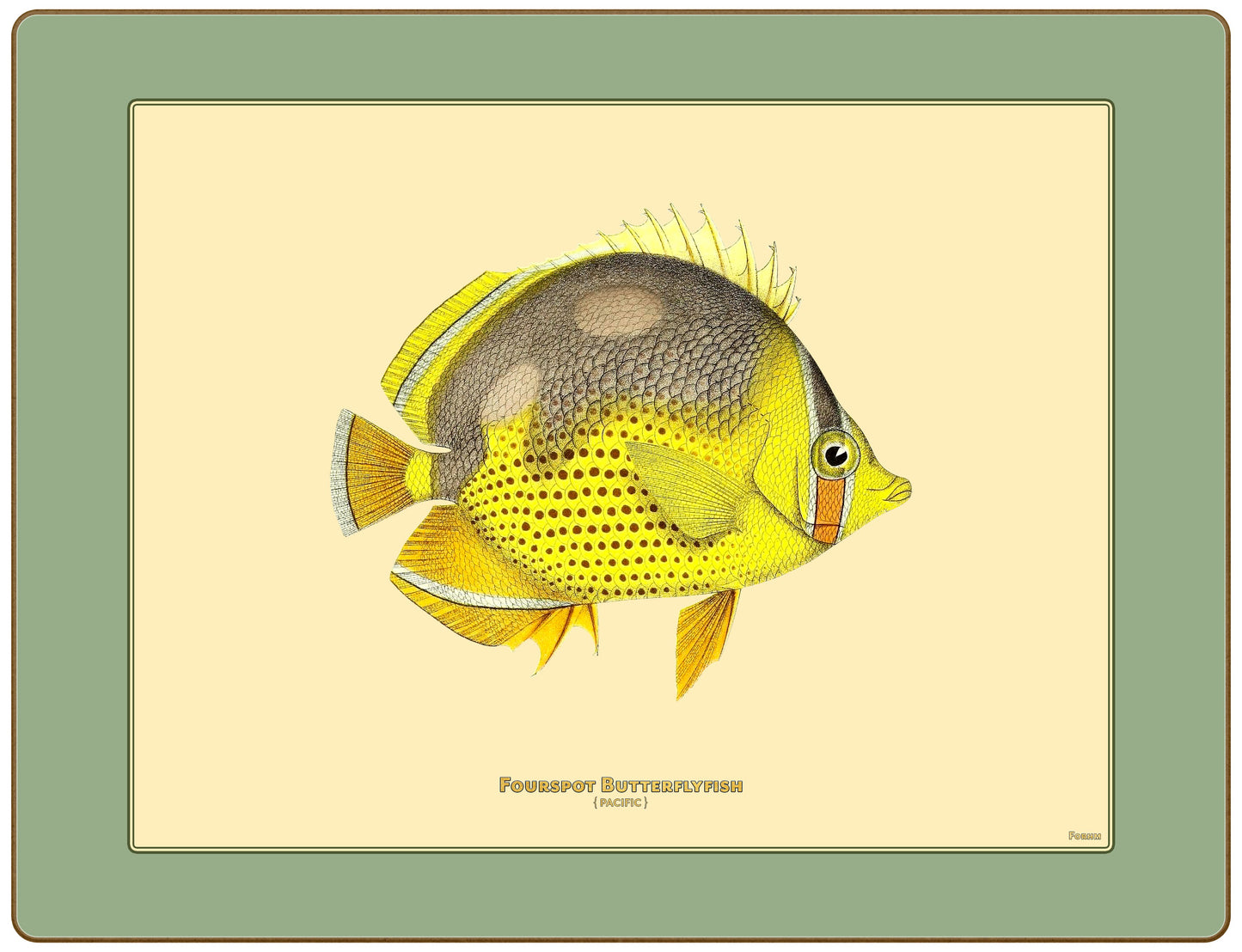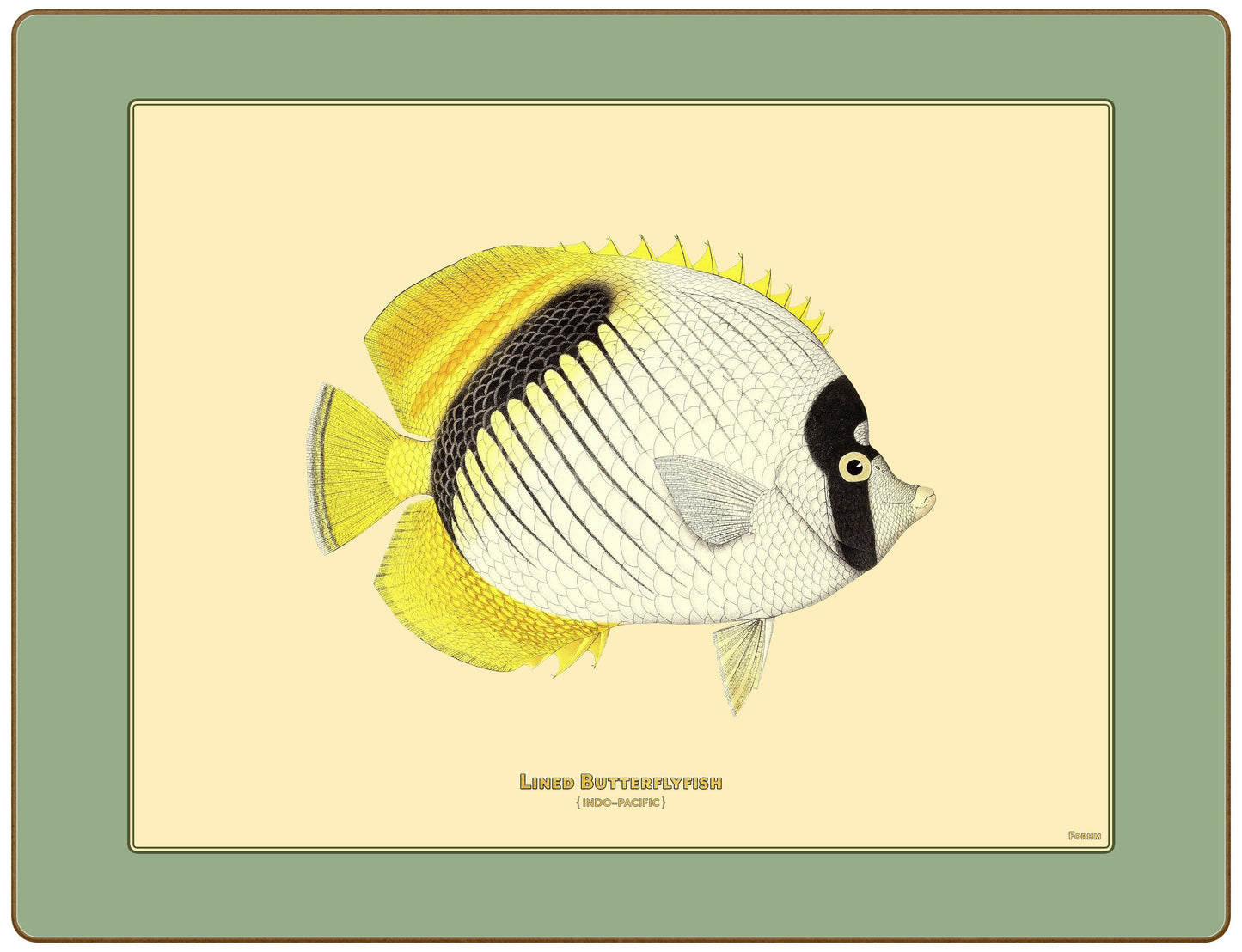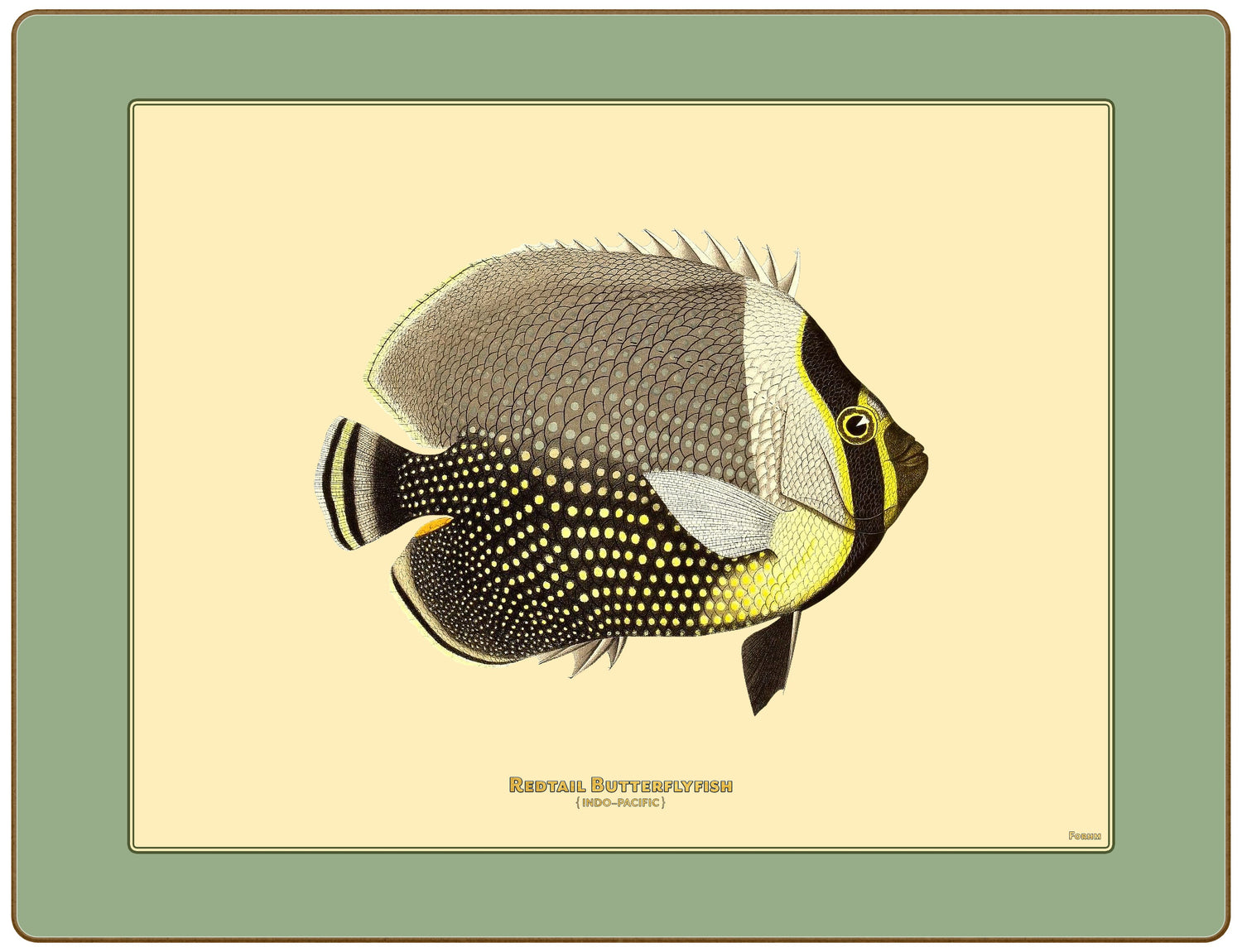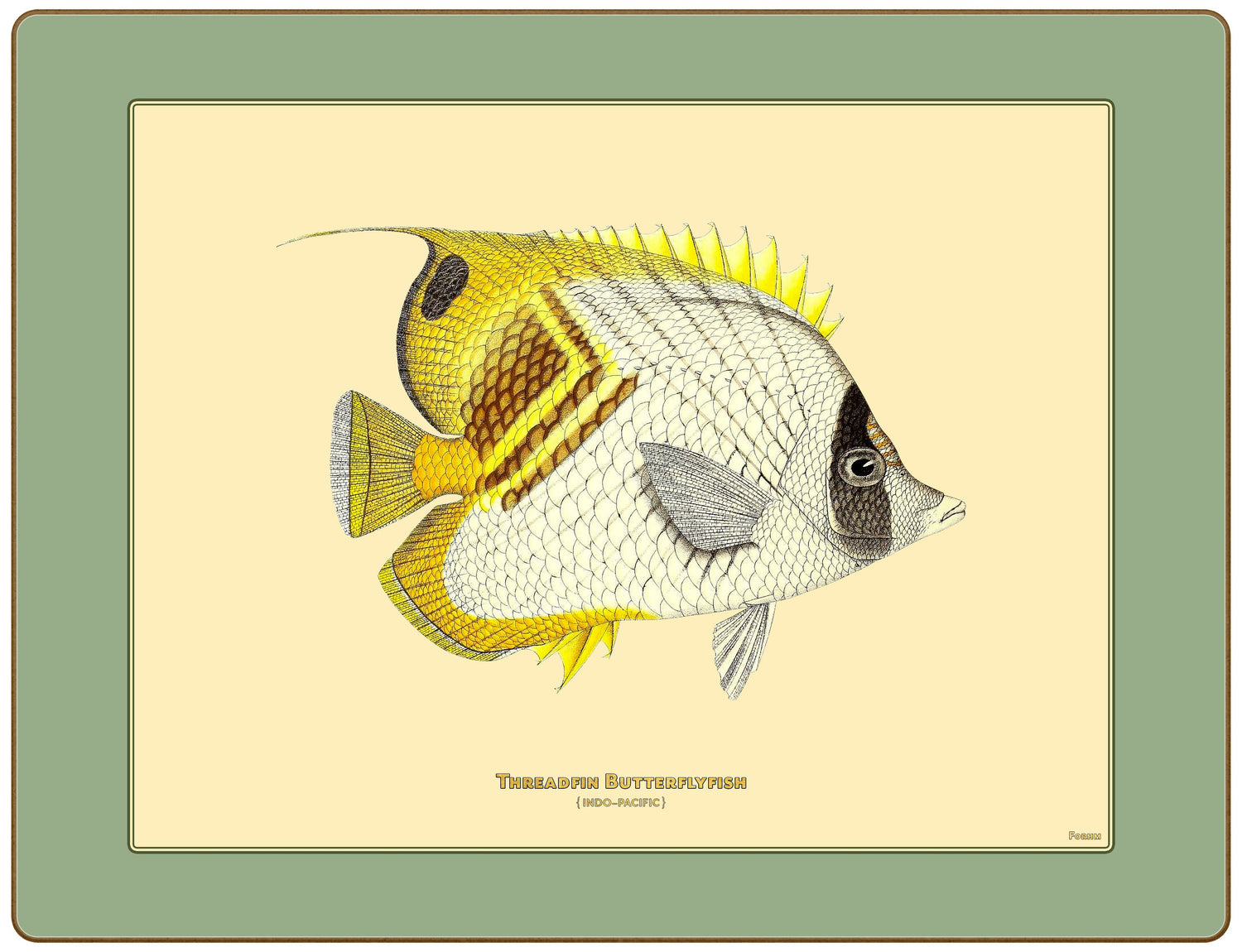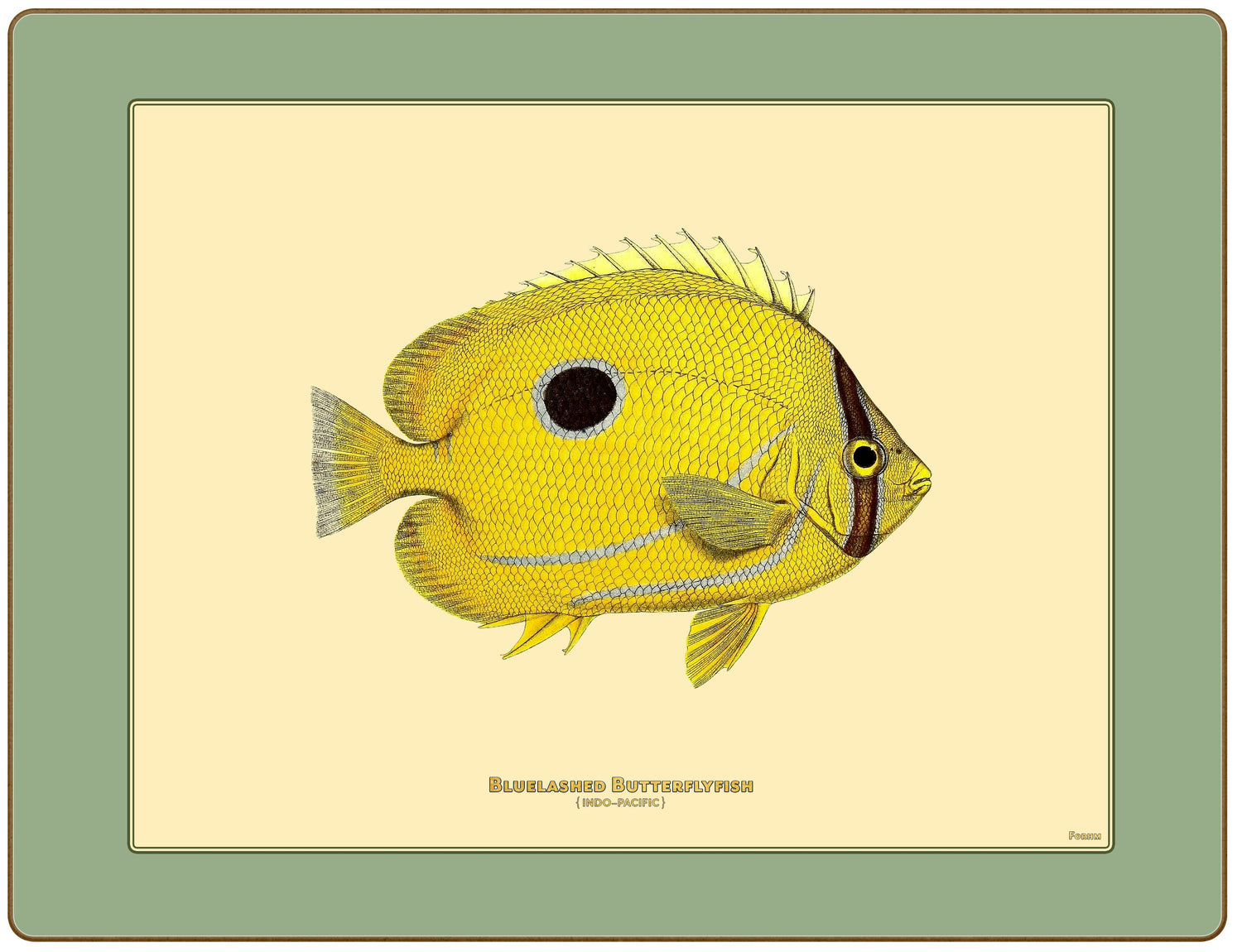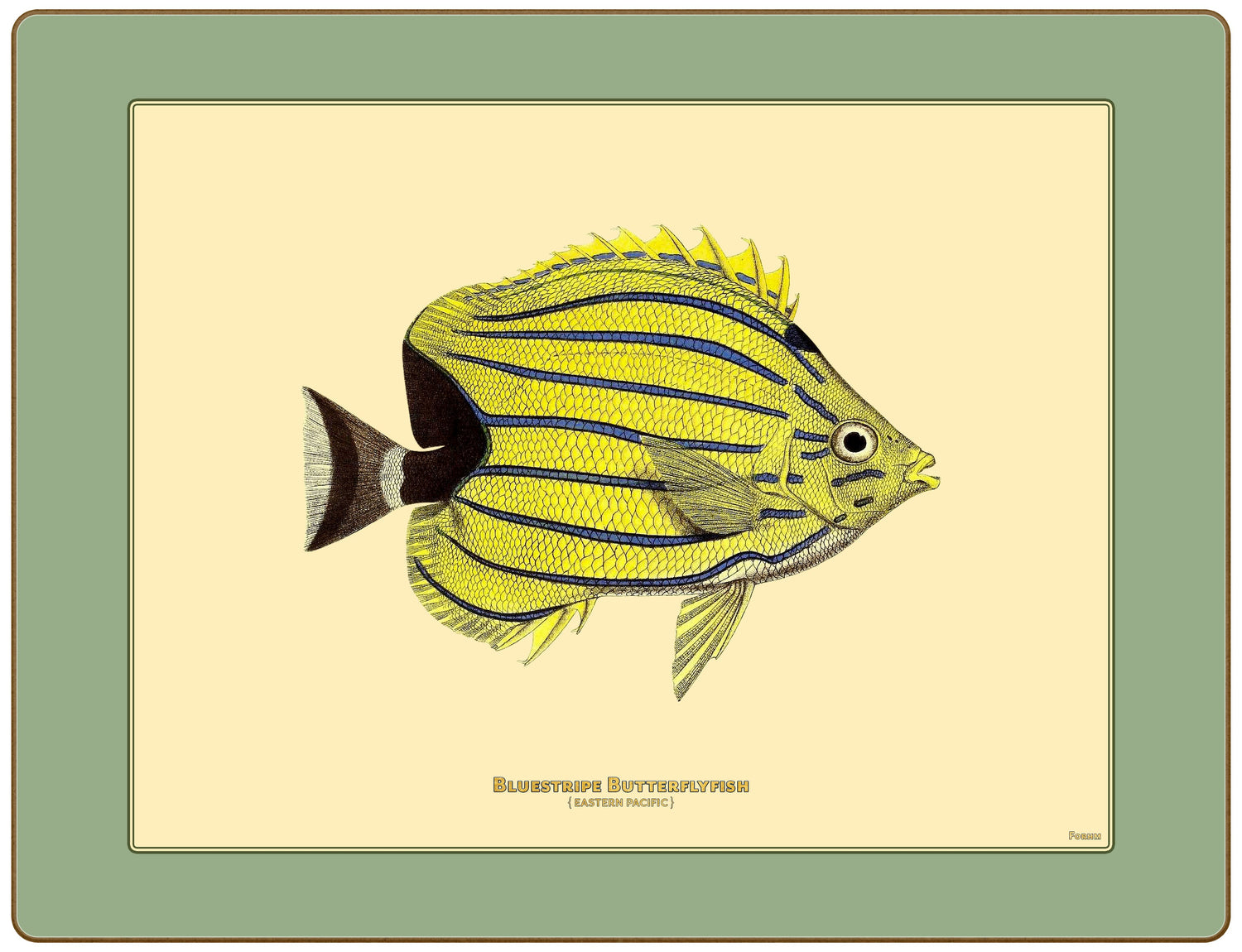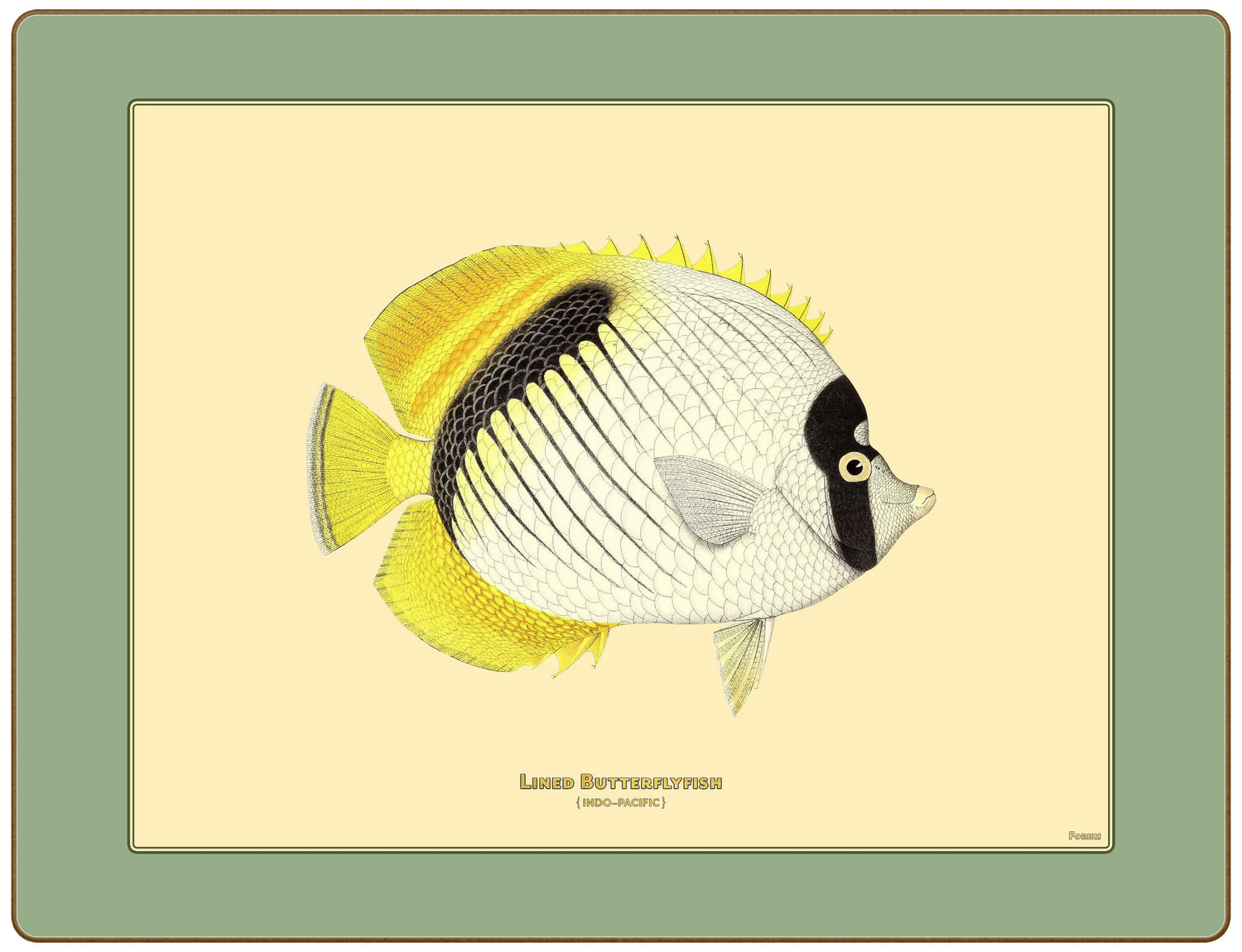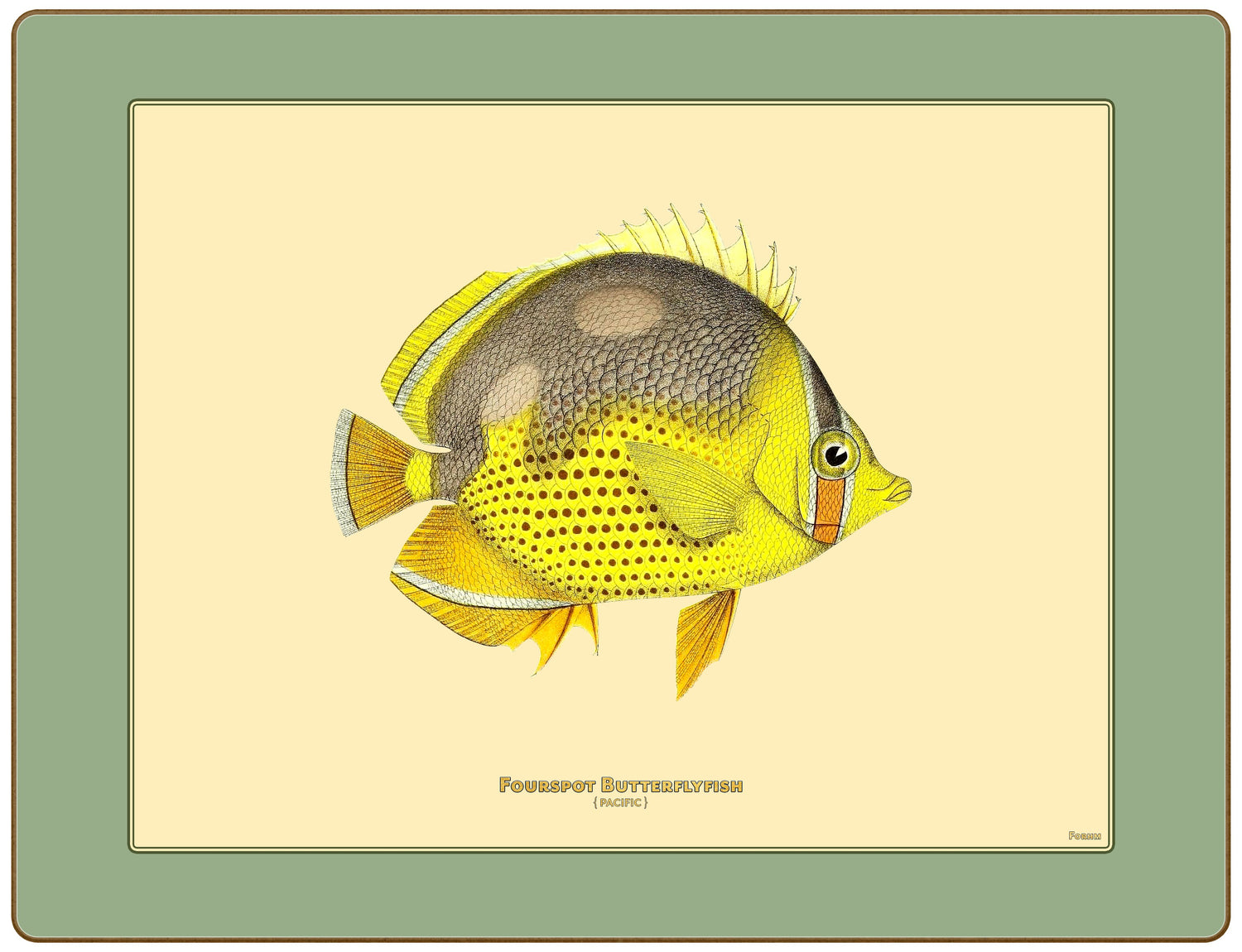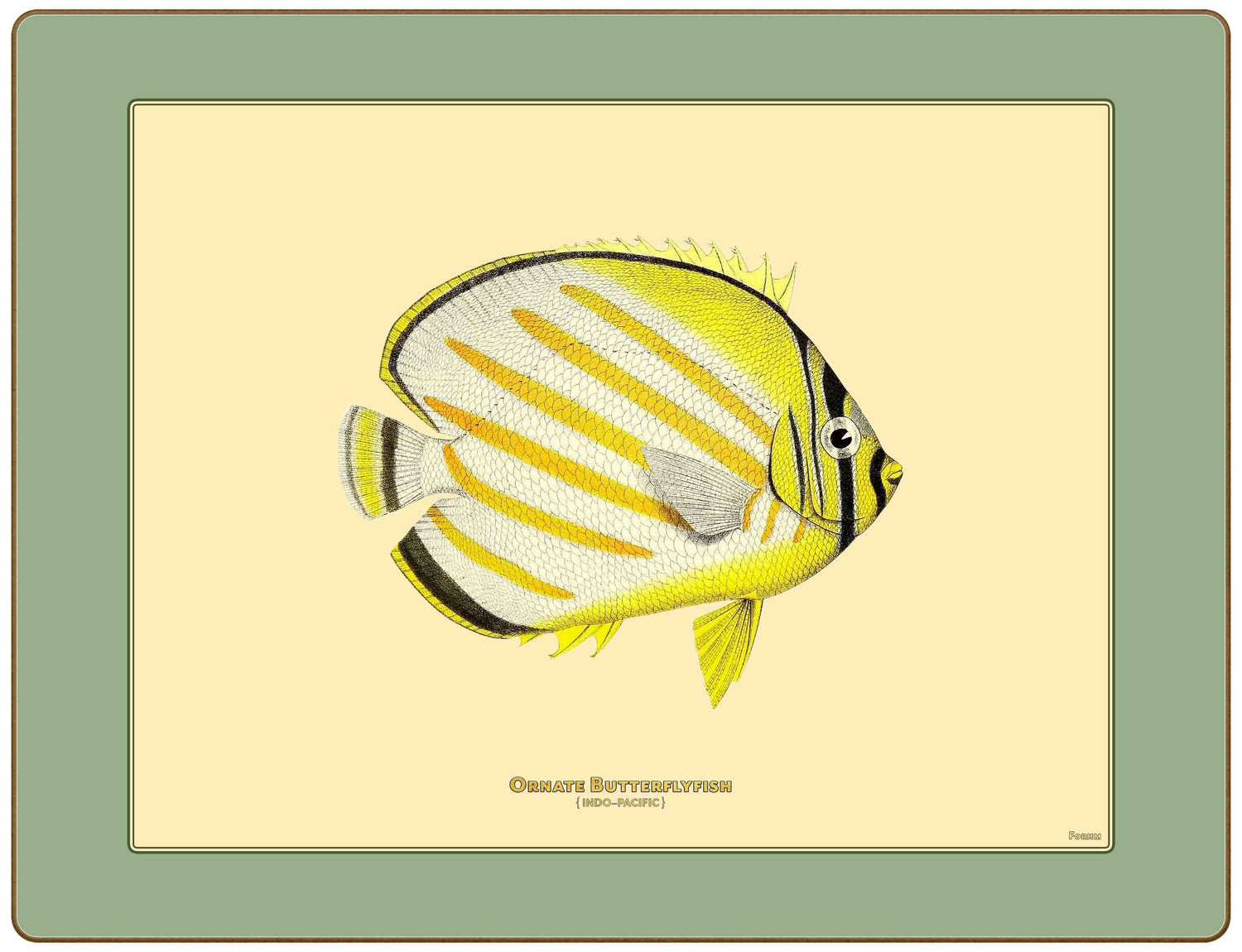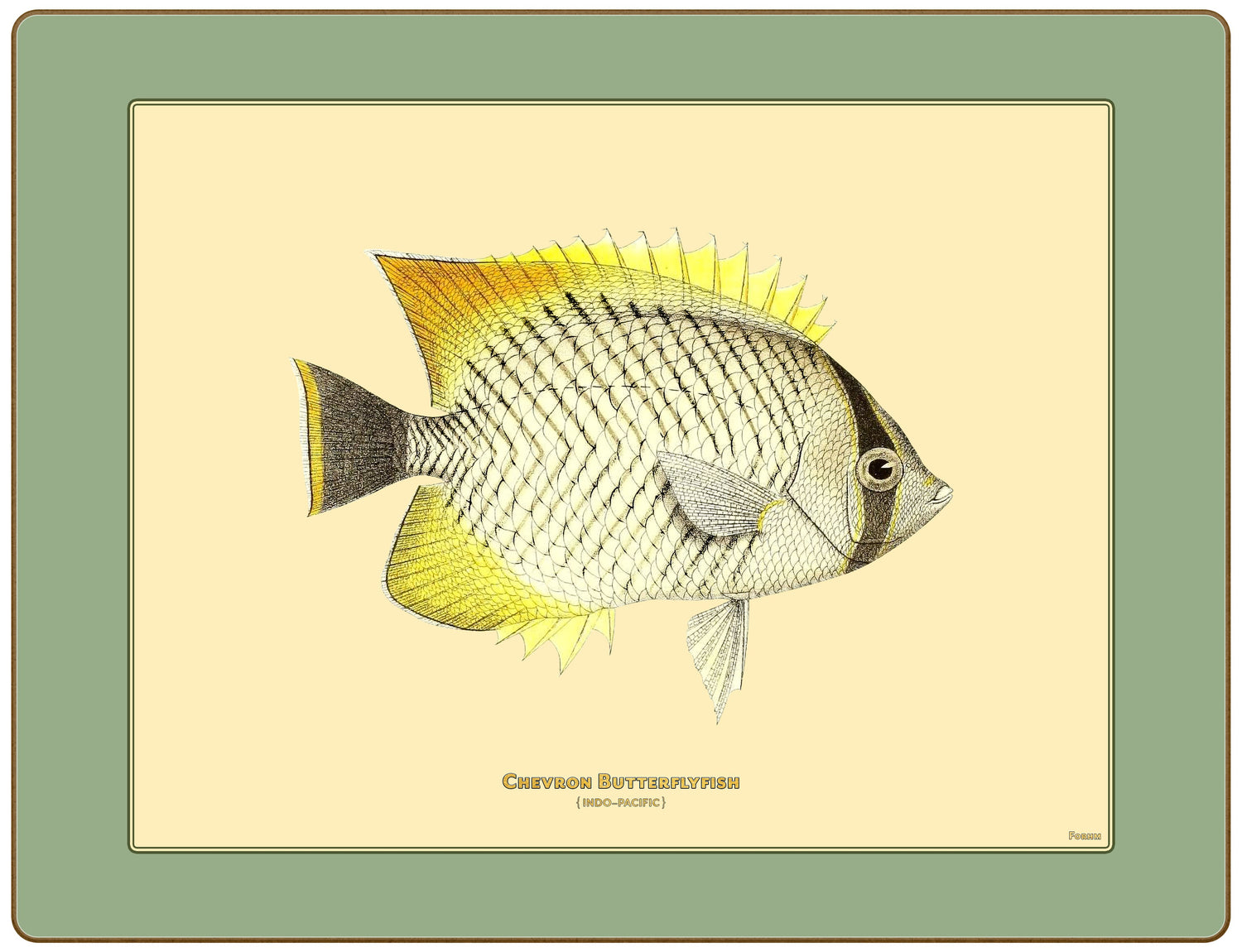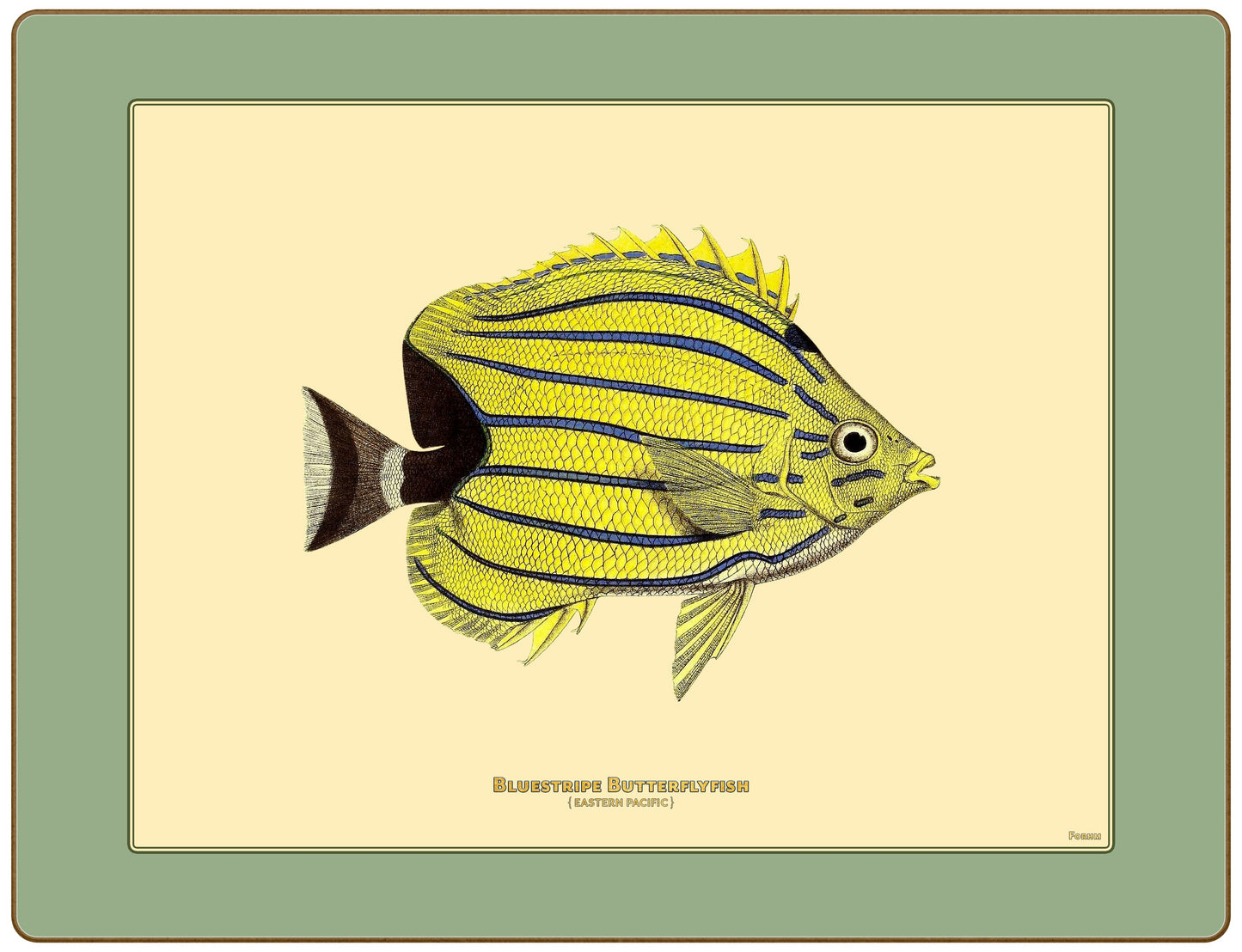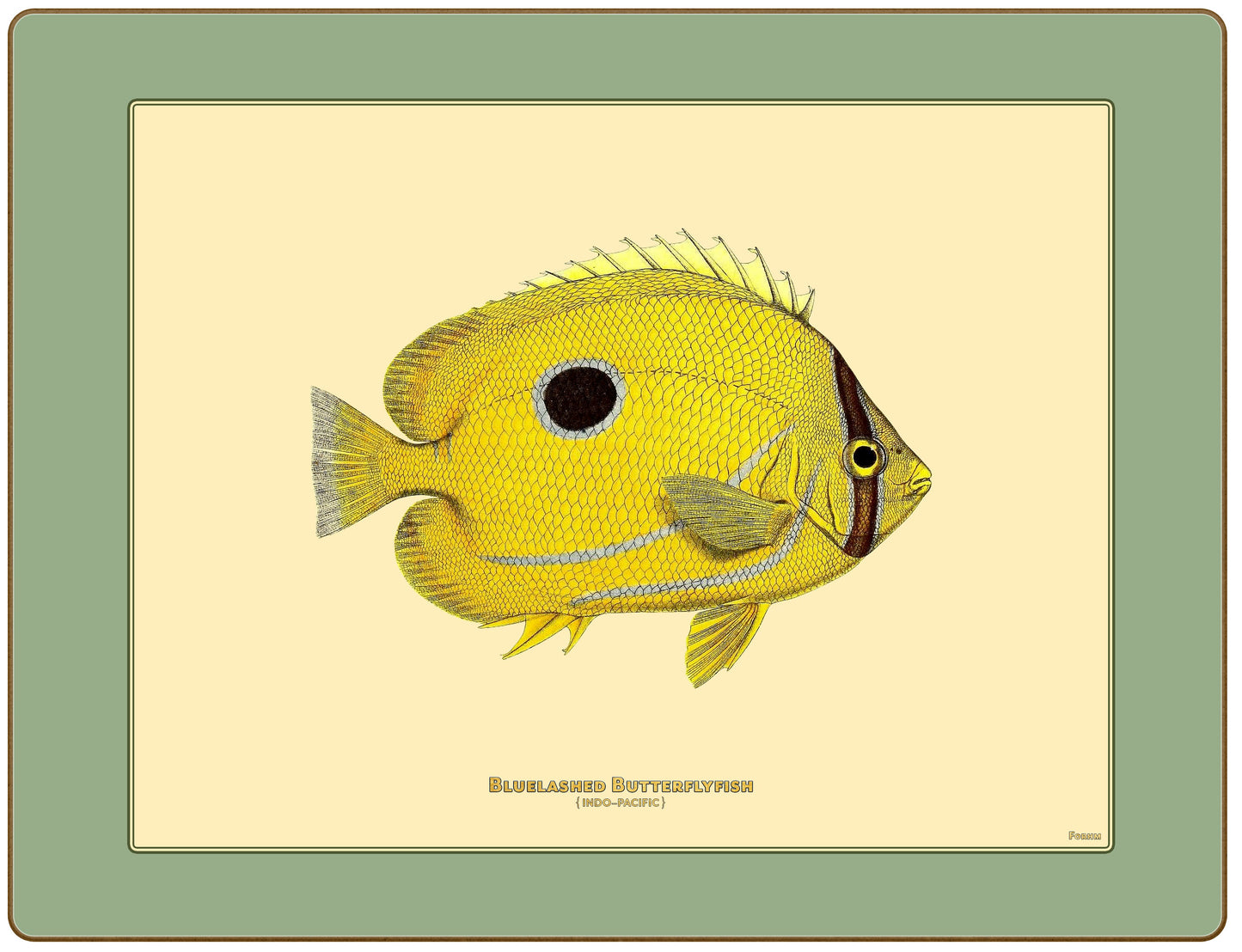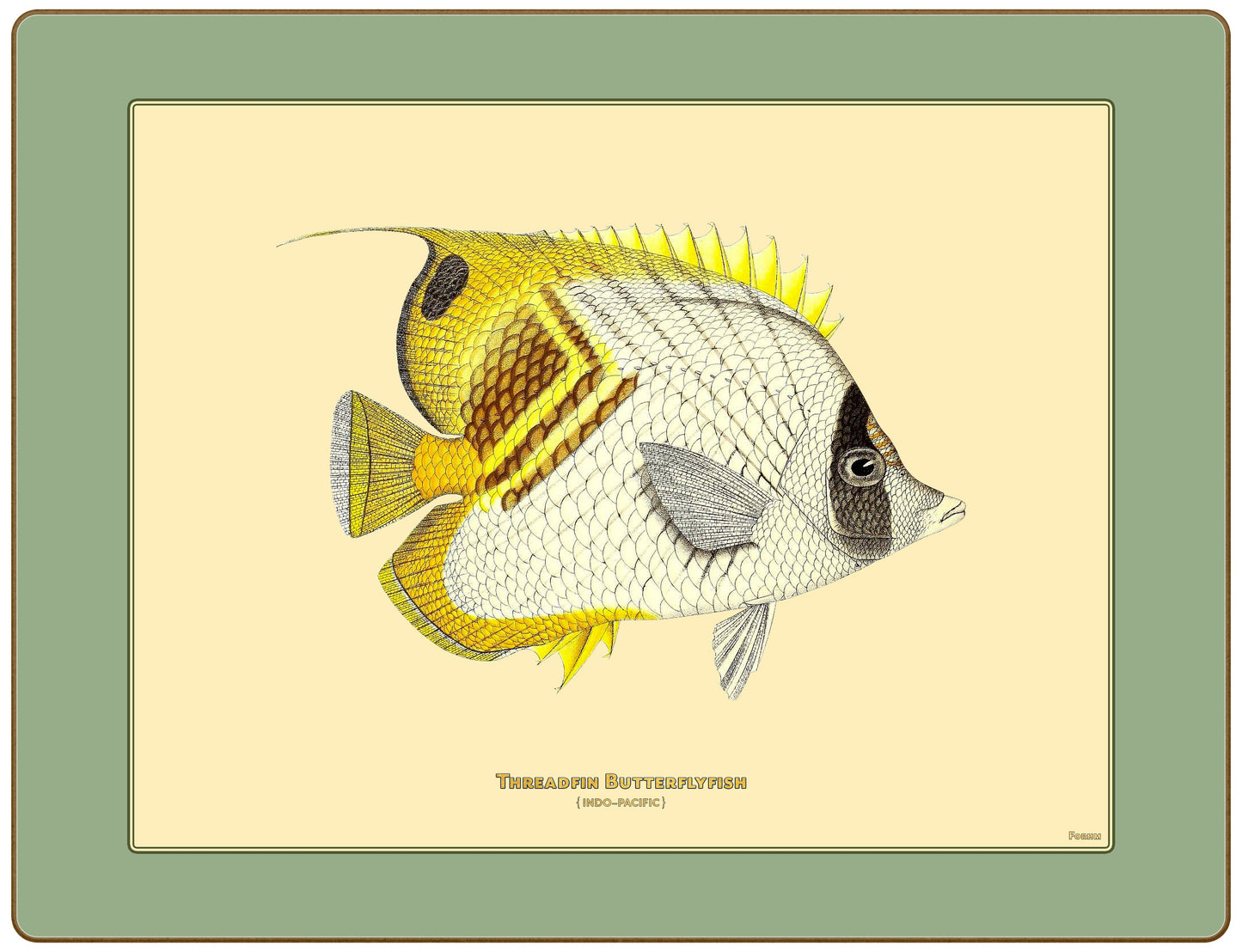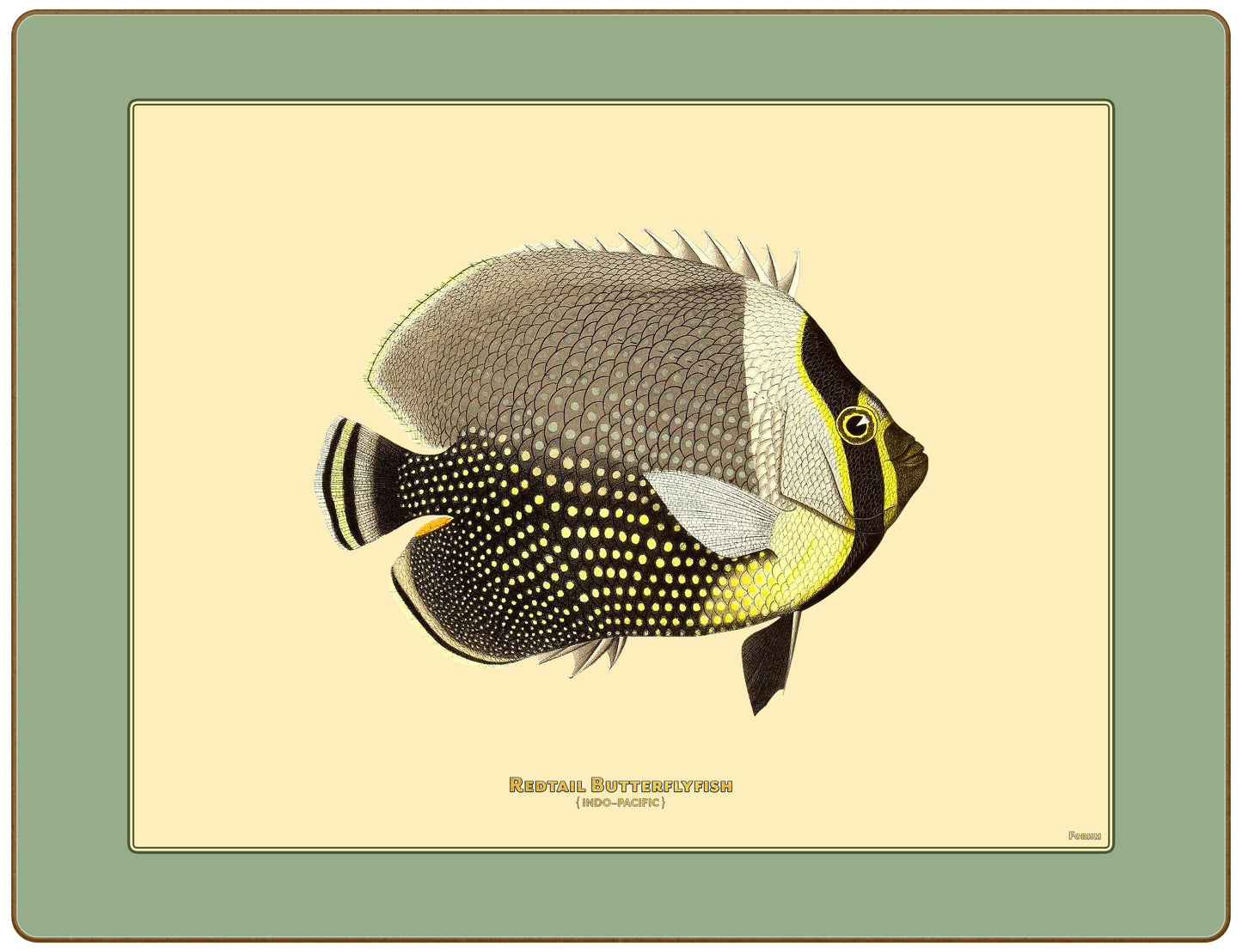Beautiful, functional placemats for dining pleasure and table surface protection. Durably made to provide decades of use when treated kindly.
Hand made in the UK from a combination of forest certified timber industry by-product, recycled paper, solvent free inks and plant derived laminates. Biodegradable.
Simply clean with a damp cloth and then dry. Not dishwasher proof.
Dimensions; 32cm x 22cm.
This full set contains eight examples of the 114 or more species of Butterflyfish which live in the tropical regions of the Atlantic, Pacific and Indian oceans. So named due to their typical colour vibrancy, eyespot patterning and dark banding, similar to the wing patterns of the equivalently named insects.
Butterflyfish have a typical life expectancy of between 3 to 10 years depending upon the species. Most are relatively small, growing to an adult length of between 12cm and 22cm, though the largest species, such as the Lined Butterflyfish you see here, can grow to 30cm in length. They have thin disc like shaped bodies, many with elongated snouts, not dissimilar to their cousins the Angelfish.
These fish will change their colours depending on their state and environment. At night they’ll markedly change and dull their colouration whilst they hide from predators in reef crevices to sleep. Some species are solitary, but some do form stable monogamous relationships, those that do typically inhabit a small territory of coral aggressively defending it against competitors.
Depending on the species they feed on coral polyps, anemones, sponges, worms, algae and plankton, relying mainly on sight to find their food. Many species predate on Butterflyfish, from Shark and eel to snapper and other large fish. They’ve evolved various defences against predation such as spines, armour and toxins.
Amusing fact; Like Parrotfish and Wrasses they swim by synchronous rowing strokes of their pectoral fins whilst using their tail as a rudder.
Originally illustrated by an American explorer, naturalist and ichthyologist, Mr. Andrew Garrett, during the 1860’s and 1870’s whilst he lived in and around the Hawaiian and Polynesian islands.
Our team has digitally remastered these fabulous antique zoological illustrations to modern day production standards for the continued enjoyment of the public.

